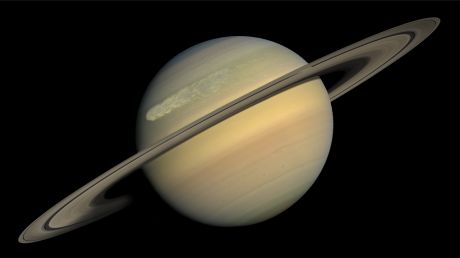
Mystery of Saturn's rings solved?
The mystery of Saturn's rings may have finally been solved, according to a team of Japanese scientists.

The mystery of Saturn's rings may have finally been solved, according to a team of Japanese scientists.

Nightmare machine is learning how to terrify humans.

This snake is a freak. It boasts the largest venom glands in the world. It eats king cobras for breakfast. And it has a scorpion's sting. But that's not what has scientists excited.

British and Australian scientists have identified an unassuming brown pebble, found more than a decade ago by a fossil hunter in southern England, as the first known example of fossilised dinosaur brain tissue.

What would the sky look like if we could see beyond the visible spectrum and gaze on the night sky in radio waves?

A switch to "small data" analysis promises to help researchers develop solutions in fields as diverse as mental health, geology, cosmology and criminology.

Herbal supplement giant Swisse Wellness has signed a multi-million dollar, three-year research deal with the country's peak scientific organisation - to investigate its own product claims.

Up to 10,000 webcams will be recalled in the aftermath of a cyber attack that blocked access last week to some of the world's biggest websites, Chinese manufacturer Hangzhou Xiongmai Technology Co has told Reuters.

Camilla Whittington has always been drawn to seahorses. Sure, the mysterious marine creatures are beautiful. But that's not what caught her imagination.

Criminal hackers have found a way to use web-enabled devices like digital recorders and webcams as coordinated launching pads, or botnets, in this attack.

The days are longer and lighter. And while the temperatures haven't been typically spring-like, the annual Cambrian-like explosion of backyard bugs is on. So who is your friend and who is your foe? The answers might come as a surprise.

Images taken by a NASA Mars orbiter indicate that Europe's missing probe fell to the Red Planet's surface from a height of 2 to 4 kilometres and was destroyed on impact.

The head of the Charles Perkins Centre said that while he wasn't surprised at the monitoring, "it is kind of creepy".

Echidnas may not seem the most active of animals.

The world has a new dinosaur: a barrel-bellied giant herbivore that stood as tall as a giraffe and grazed the grasslands of what is now central-west Queensland.

A European space lander reached Mars on Wednesday in what scientists hope will mark a major milestone in the exploration of the Red Planet, but whether it touched down on the surface in good working condition is far from certain.

They are the hauntingly beautiful black and white images that would not look out of place at any distinguished photo gallery. But they're the product of years of hard work by some of the world's top scientists and engineers.

While "prying into the sex lives of snakes", Professor Rick Shine put himself on the path to the Prime Minister's Prize for Science.

This is not just an idle trivia question for planetary scientists.

Researchers have observed for the first time how villainous cancer cells attack and destroy the bone of leukaemia patients using a new "street view' system to zoom in and spy on the invaders.
Save articles for later.
Subscribe for unlimited access to news. Login to save articles.
Return to the homepage by clicking on the site logo.